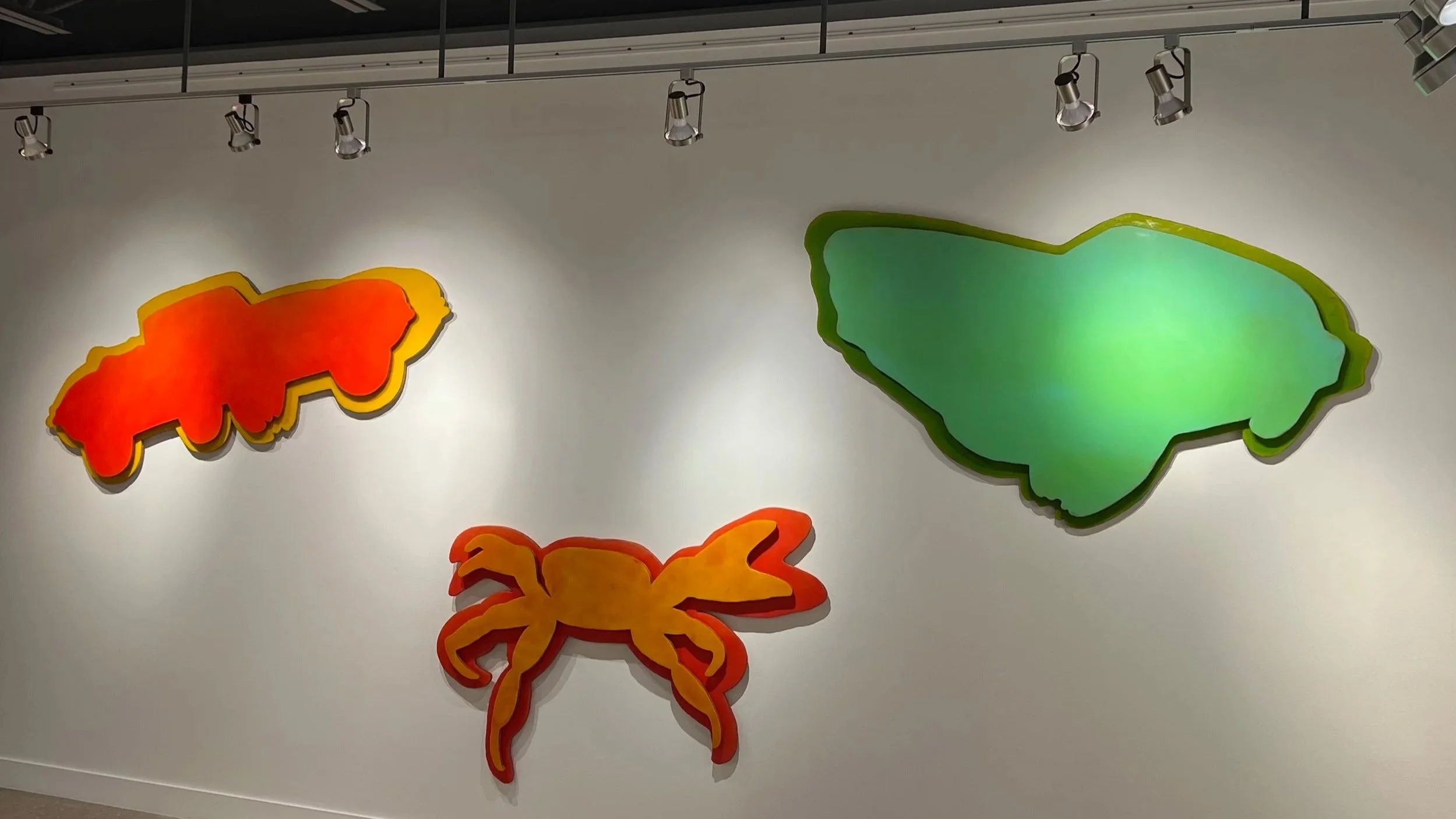Crash!
3 part sculpture installation at the National Gallery Cayman Islands 2022
Crash! is an interpretation of the brevity of life where nature, memory, and the industrial machine violently collide. The work speaks directly to a distinctly Caymanian expression of ‘Pop’ by mapping a profound personal memory onto the island’s visual landscape of globalized development. Like the original 1960s Pop art movement, Crash! subverts high-art traditions by utilizing industrial materials and appropriating a seemingly mundane, yet tragic, everyday subject—the roadkill collision—for critical commentary. I draw inspiration from the high-gloss, synthetic Finish Fetish of the California West Coast scene, translating the aesthetic of the sleek, consumer machine—like the E-Type convertible and the TransAm I learned to drive on—into pigmented resin-coated plywood silhouettes.
While my method of utilizing resin-coated plywood draws a clear lineage to the material innovations of the 1960s California Finish Fetish artists like Billy Al Bengston, John McCracken, and Craig Kauffman, Crash! departs stylistically from their pursuit of flawless, high-gloss perfection. Unlike their sleek, often reflective surfaces that celebrated industrial sheen, my work consciously integrates a waxy matte resin finish coat to the plywood. This distinct choice of layering translucent pigment coats achieves what I refer to as milky finishes alongside vibrant and fluorescent colors. This painterly quality allows for a nuanced interplay of depth and surface, introducing a signature organic tactility and subtle light absorption that intentionally contrasts with the pristine, manufactured aesthetic of traditional Finish Fetish.
This material choice, with its vibrant, saturated finish, establishes the industrial force in direct, material contrast with the organic subject. The core narrative is a recurring, traumatic encounter on Grand Cayman’s East End highway: the clash between vehicle and the migrating land crabs. This is not merely an accident, but a tragic confrontation resulting with nature squandered, and not without a cost, where both parties are the afflicted. Crash! offers a commentary on contemporary socio-political issues, framing the flat tire caused by the crab’s shell as a kind of ecological karma and signaling the devastating inevitability of the collision between human development and vulnerable local ecosystems.
Crash! Jaguar
2022
Pigment/Resin/Plywood
Crash! Camaro
2022
Pigment/Resin/Plywood
Crash! Crab
2022
Pigment/Resin/Plywood
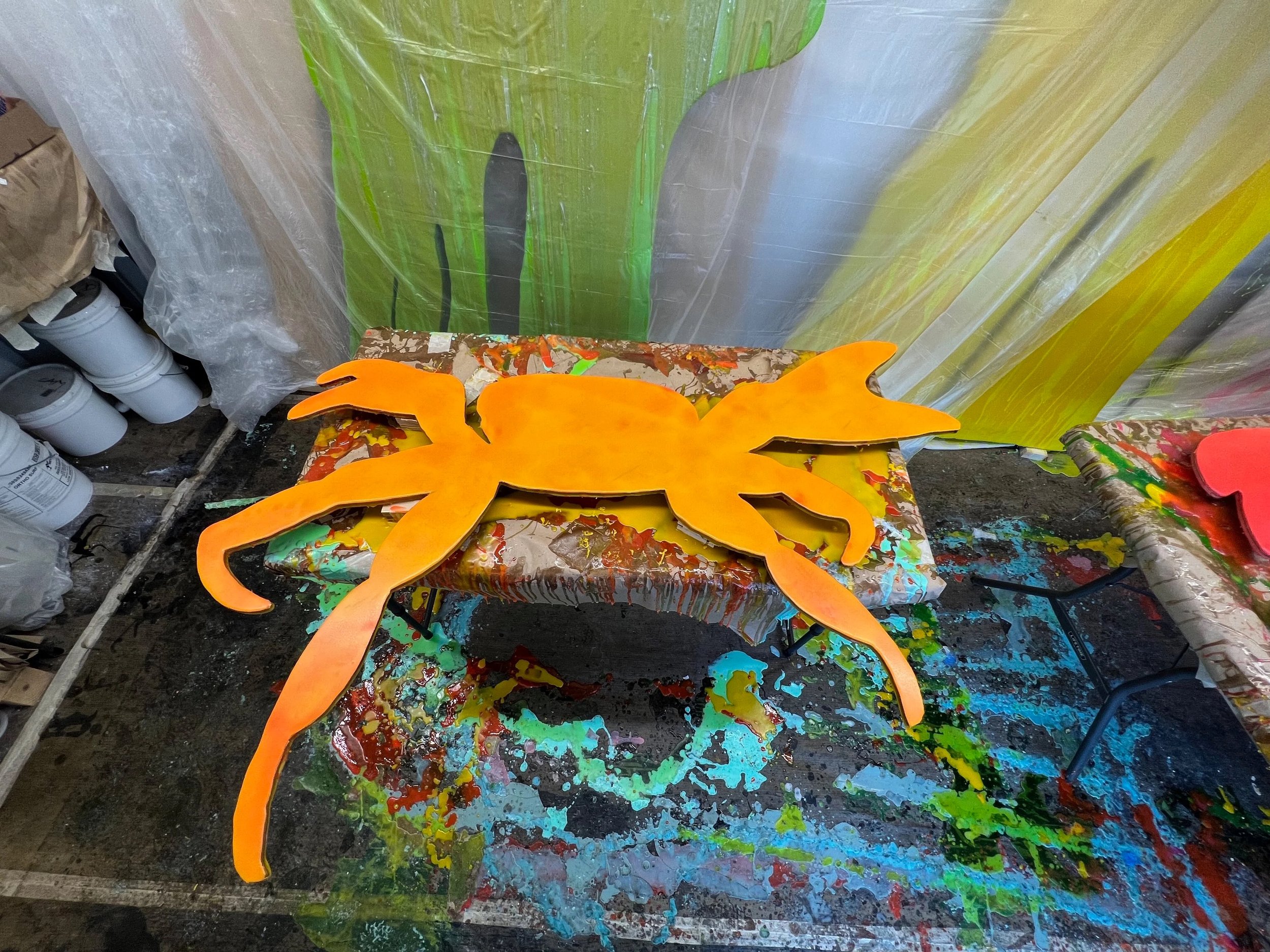
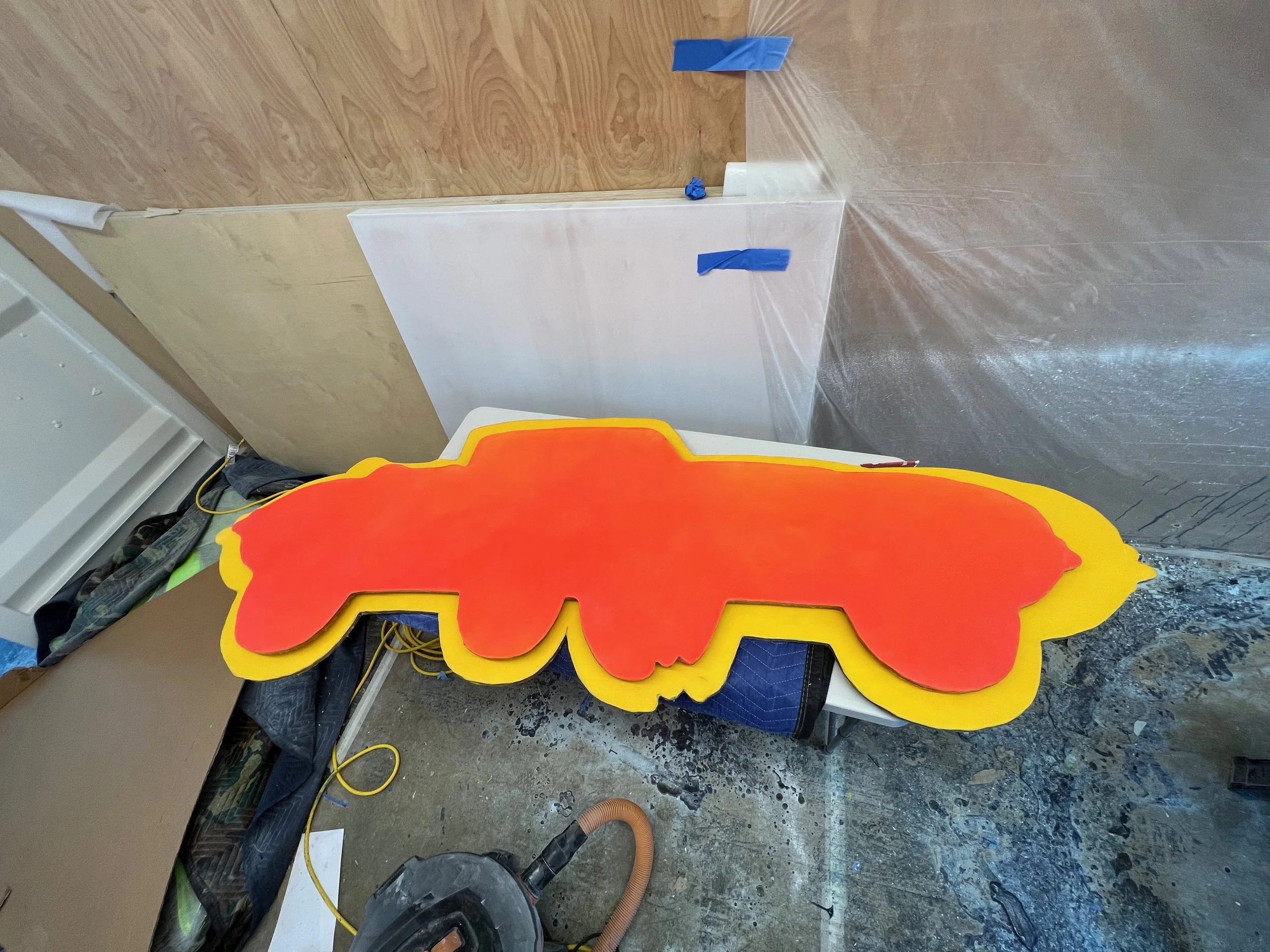
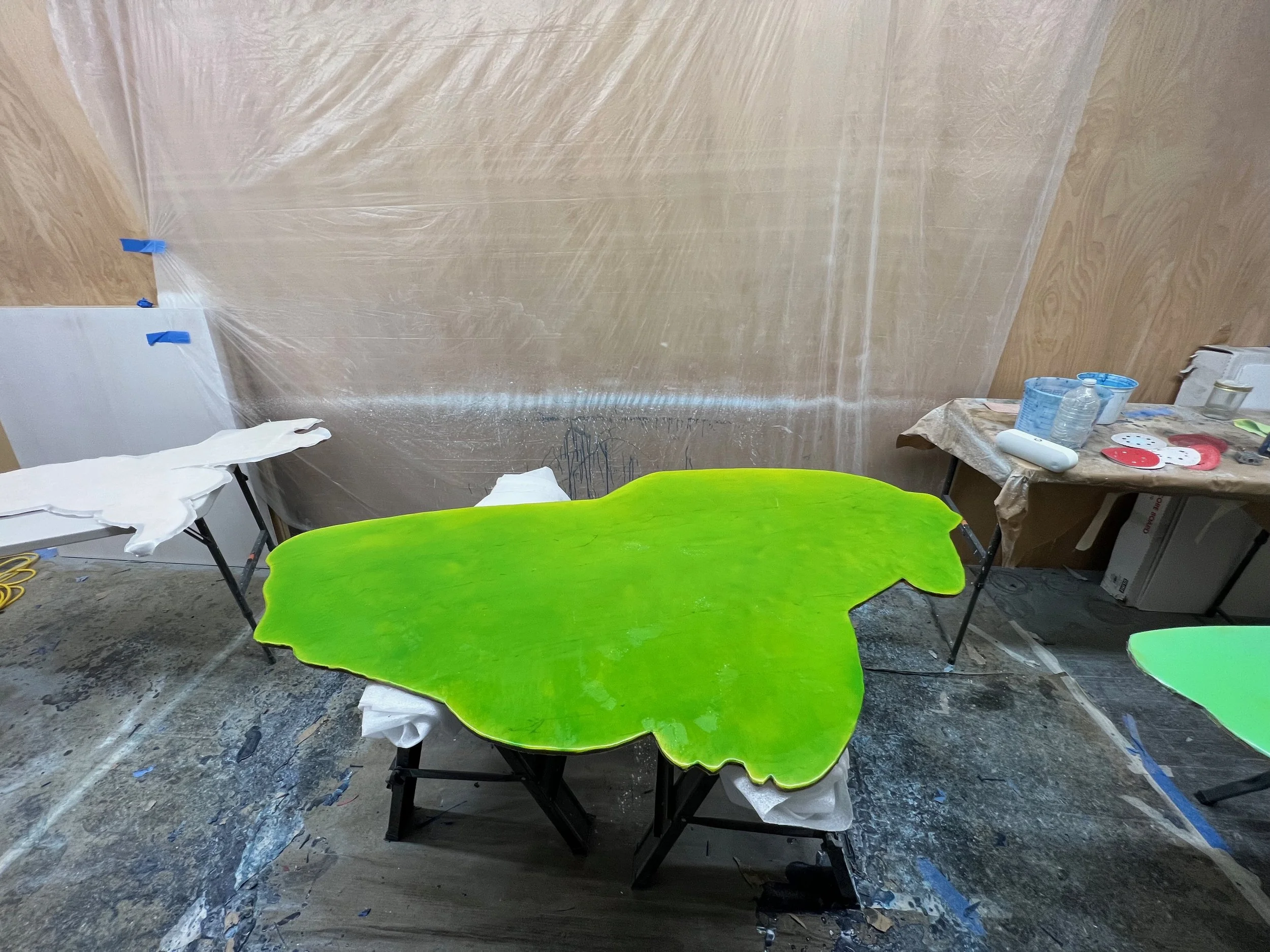

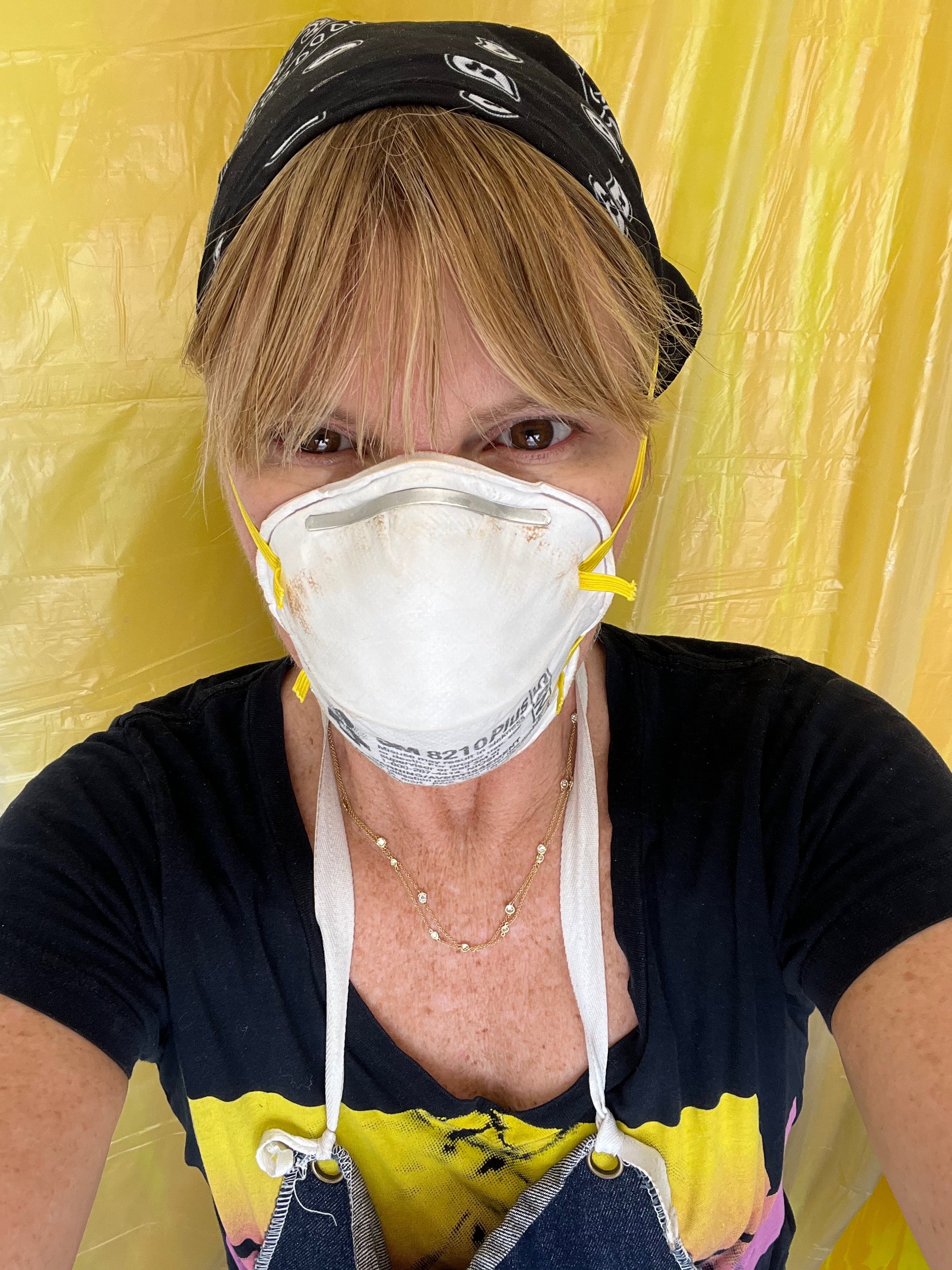
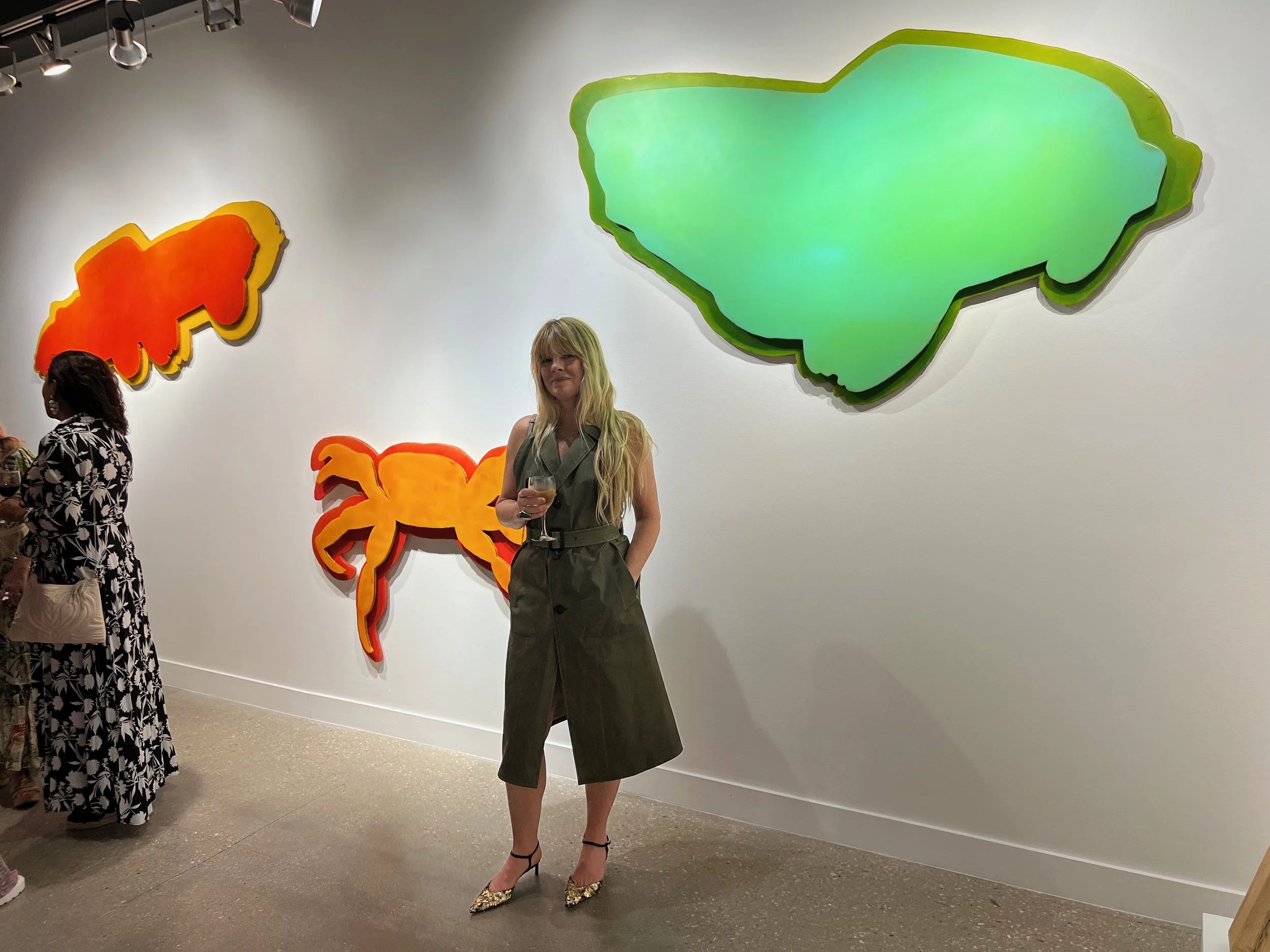

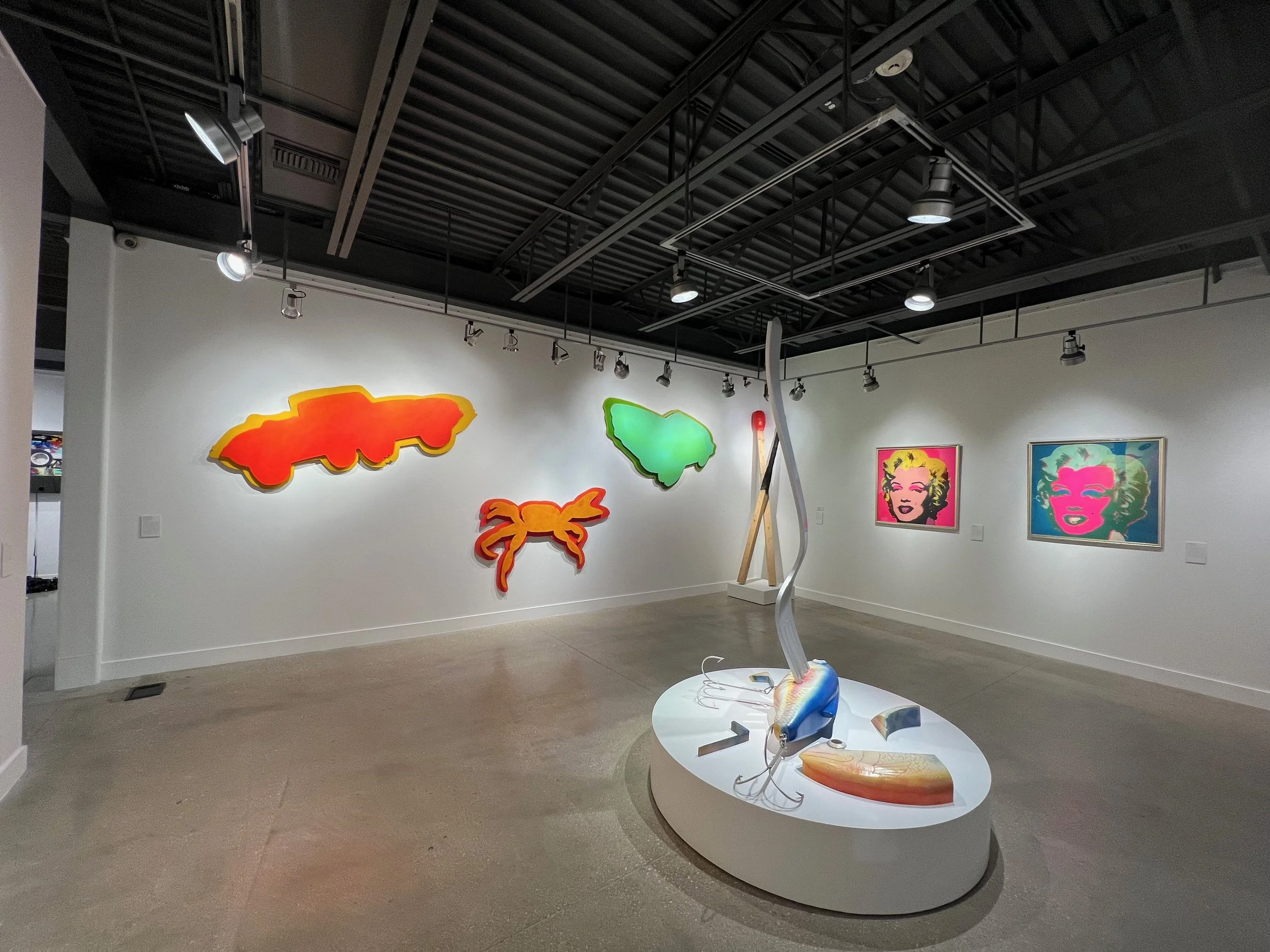
“As a critical term, ‘Pop’ is closely associated with the namesake art movement that rose to prominence in the early 1960s, producing some of the best known works of twentieth century art defined by the mundane copying and ironic appropriation of the subjects, materials, and everyday imagery of popular culture.
With this in mind, Pop and the Popular examines recent developments in contemporary Caymanian art, identifying key traits and thematic connections in the work of artists who demonstrate an affinity with the stylistic characteristics and subject matter typically associated with a Pop art aesthetic. In drawing these threads of connection between diverse artists working in a variety of media, the exhibition seeks to map the conditions of a distinctly Caymanian expression of ‘Pop’ rooted in the visual landscape of contemporary Cayman: vibrant, saturated colours; the use of reclaimed and recycled materials; the clash of the old and the new, and the erosion of cultural traditions in the face of globalisation and the homogenising influence of American consumer culture. The use of parody and humour, as well as the inherent potential for commentary on contemporary socio-political issues, have likewise both emerged as defining aspects of this prevailing aesthetic tendency.
While seeking to define the characteristics of this emergent trend, Pop and the Popular also looks to address questions of personal and collective identity by examining the ways in which artists explore their conception of self through their identification with culture both locally and globally, acknowledging the ways in which identity is ultimately mediated and shaped by broader, transcultural trends.”
-William Helfrecht, Curator

